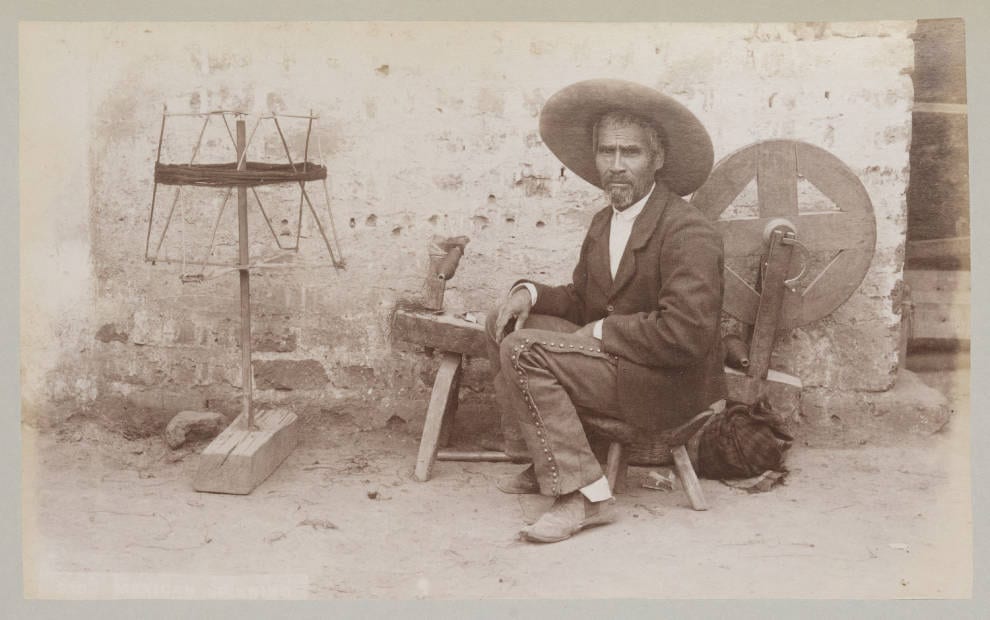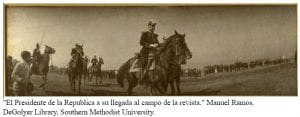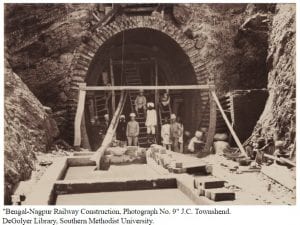This is a photograph of then president of Mexico in 1902, Porifiro Diaz, inspecting his soldiers while doing a general review of the Mexican military. Diaz leads what appear to be several officers on horseback, while in the background of the photograph stand many Mexican troops awaiting to be inspected. The men in the foreground stand out not only because they are on horseback, but also because they are dressed in fine military regalia; one of them is even brandishing a sword. In the bottom left portion of the photograph one can see a small figure that may be a young boy. He seems to be dressed nicely, and could be the son of one of the Mexican officers. The photograph seems to be taken on an open plain, and it is hard to judge whether the ground is covered in grass or simply dirt. Next to the boy is the sword-wielding officer, who appears to be directing the troops behind him in preparation for the President’s arrival. Though it is hard to see the soldiers in the background, they do not necessarily appear to be in perfect formations nor is their clothing completely uniform. The biggest question that arises from this photograph is why the Mexican president felt it necessary to inspect his troops personally. Perhaps there were issues with morale or supplies, as the soldiers in the background do not completely resemble a professional standing army.
This photograph displays the 1890’s construction of a railroad spanning from the cities of Bengal to Nagpur under the guidance of the British Empire in India. The photograph shows a mixture of both Indian workers and what appear to be British overseers working on tunneling through a large mass of rock, likely a mountain. The Indian workers are wearing simple white garments, as well as headwraps. Some of these Indian men appear to have no shoes, indicating that they either preferred to work without them or simply could not afford to purchase anything to cover their feet. Some of the British men depicted in this photograph are in nice uniforms, while others are wearing work clothes similar to their Indian counterparts. The working conditions look miserable and unsafe, with no protective gear and rickety wooden supports preventing rock from crashing down on everyone. It is hard to derive the power structure between the British imperialists and Indian locals, as no one seems to be placed more prominently than anyone else in the photograph. The ladders in the background inside the arch they have constructed show that this is a very recent project, as they have made little headway into the tunnel. This sort of work would have been incredibly hazardous without modern safety procedures, and it is likely some of the men in this photograph died while working on the railway. The main question that arises is who are the British men wearing the uniforms and large hats. Were they part of the British military, or simply engineers tasked with being foremen on the project?



